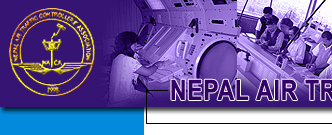|
Air Traffic Control - Need and
Objective
The conception of Air Traffic Control profession evolved
right after the invention of aircraft by Wright Brothers in
1903. During that time some one had to observe carefully the
progress of flight from ground. This operational watch over an
aircraft prompted the institution of air traffic control.
The very work of air traffic control began from waving of flag
from the airfield symbolizing runway safe for landing.
As more and more aircraft along with their variation in speed
and category took the sky, the only view of pilot from cockpit
was not possible to maintain separation from each other. That
in turn resulted the collision between aircrafts, then after
the need to keep aircraft apart became prominent. Different
measures like carriage of radio equipment and defined set of
route for all to follow were taken. More and more equipment
and ground based navigational aids for the guidance of
airborne aircraft were developed and the actual controlling
authority to aircraft by air traffic controllers were given
for channeling the flow of air traffic and keeping them
separated.
The aim of air traffic control service is to ensure safe,
orderly and expeditious flow of air traffic, among them
preventing collision between aircraft is the prime objective.
To achieve those objective air traffic controller issues
clearances to the pilot to start, taxi, to take off and land,
and to provide safe separation between aircraft at any given
time based on internationally agreed standards and procedures.
Besides these, air traffic controllers also provide any
pertinent information for the safe conduct of flight (Flight
Information Service) and assist when aircraft is in need of
search and rescue (Alerting Service).
Air Traffic
Control-The Profession
Air Traffic Control like other modern profession it has developed
from the humblest beginning into a highly sophisticated and
technology driven occupation. There is no special theory, how
it was discovered and invented but it has evolved gradually
and driven by need.
Air Traffic control is the science some say the art of
maintaining safety by keeping air traffic separated and as
well as expediting and maintaining the orderly flow of air
transportation.
The role of ATC has been simply described as converting the
traffic demand into traffic flow with least possible delay.
Clearance issued by air traffic controllers is for the safety
of flight which can not be compromised.
Air Traffic Controllers should be well trained, mentally
sharp and physically fit. They must have up to date knowledge
of internationally agreed standards and procedures set for the
air traffic control.
A controller is a quick thinking man who does not have the
privilege to stall. All instructions to aircraft are recorded
continuously on tape and any instructional error is traceable
by replay, a tremendous constraint on the individual – a
disturbing yet necessary requirement that no other profession
entails and no professional has to contend with. This makes
the controller a man with the mission of responsibility
scrutinizes constantly, functioning to standards of pinpoint
accuracy. In most jobs one can usually get by with off slip
–up or and occasionally unfocused mind. Not so in Air Traffic
Control where the margin for error is zero.
ATCs use
standard phraseology to give instructions to aircrafts,
which must be clear and concise. Any mistake made by ATC or
misunderstand by pilot can result in a disaster and loss of
many lives.
Other
Links -
AIR
TRAFFIC CONTROL PROFESSION
EXECUTIVE
COMMITTEE
PHOTOGRAPHS
AIRPORTS
|



